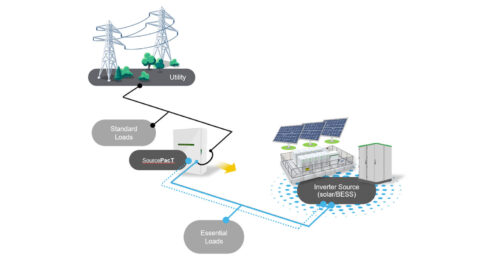Case study: Hospital electrical distribution system design
Health care facilities require circuit protection for electrical systems.
Circuit protection for electrical systems is extremely important in an electrical distribution design, especially in health care facilities. The following is an investigation of a hospital’s electrical distribution system that experienced complications a couple of years ago, and the measures that were taken to address improperly applied circuit-protection strategies to provide a more reliable system.
It was after midnight on a Sunday in a 40-year old hospital when the surgery department experienced a line-to-ground fault on a 20-amp, single-phase branch circuit. The fault was detected in the system, power was interrupted, the generators fired up, and power was restored to the critical branch in a matter of seconds. This ordinarily doesn’t seem like a huge ordeal. Hospitals are designed to overcome these situations and are provided with reliable electrical distribution systems for exactly this scenario. The hospital engineering staff heard the generators humming and knew they had a little bit of time to assess the situation; until the phones started ringing. What they soon discovered was that, while the generators were running as they should, they were not supplying power to the end-use devices on the critical branch. The engineering staff quickly began to panic as they frantically tried to restore power. Fortunately, the hospital engineering staff was able to quickly pinpoint the issue and get the critical branch back up and running with no lives lost. However, a root-cause analysis had to be conducted on the system to determine what caused this event and apply measures to ensure this would not happen again.
What was discovered was that the original ground fault occurred at a light fixture in a corridor outside one of the operating rooms. The cause was a very old water line that had sprung a small leak and was dripping on the electrical connection of the light fixture, causing a line-to-ground fault. This light fixture was powered from a panel on the critical branch of the emergency system. The fault was quickly detected by the first circuit breaker in the system that happened to be equipped with ground-fault detection capability. This was in the main normal power service entrance switchboard (as it should by code), however was no-where near closets to the fault. The ground-fault sensor triggered the circuit breaker to open, and it was discovered this device was incorrectly set to act too quickly. This resulted in the de-energizing of the normal side of the critical-branch automatic transfer switch, which then detected the loss of power, properly signaled the generator to start, and transferred over to the emergency power source. This, in turn, repowered the faulted light fixture circuit and re-introduced the ground fault. Unfortunately, the switchboard feeding the emergency side of the transfer switch also possessed ground-fault detection (this is not permitted by code). And this circuit breaker was also incorrectly set to act too quickly. Subsequently, the main critical-branch emergency-side distribution circuit breaker also opened, resulting in a loss of power to the hospital’s critical branch from both sources (utility and emergency generator). In summary, a catastrophic event could have been caused by improperly applying ground-fault protection.
After the event, an additional review of the aged hospital system brought to light many other code deficiencies and overall reliability concerns. Fortunately, the hospital acted quickly to correct the deficiencies that were found and now has a much more reliable and code-compliant system despite the age of the hospital. It was discovered that many of the adjustable electronic-trip-type circuit breakers were set to the factory default, which is typically the lowest level possible. A full coordination study revealed that there were many instances where both the normal and emergency power systems were at risk of upstream breakers reacting too quickly to a fault and tripping before downstream devices. These adjustable breakers were set to more appropriate settings. It was also uncovered that many of the emergency power-distribution breakers were equipped with ground-fault trip units. These were removed (since they are not permitted by NEC on the emergency power side) and replaced with a ground-fault indication/alarm. It was also noted that there were several undersized feeders that were not adequately protected by their upstream OCPD, leaving the system at risk for potential fire during an overload condition. These situations were also corrected. It is fortunate that this particular hospital system realized the importance of a reliable electrical distribution system and was willing and able to spend capital resources to upgrade their system to ultimately provide a safer, more reliable system for their patients and staff.
Every building is different and there is not a step-by-step process to follow to build an electrical distribution system. When it comes to circuit protection, it is critical to be aware of and understand the requirements. By dissecting the applicable codes and truly understanding the purposes and intent of circuit protection, you are on your way to a truly safe and reliable electrical system distribution design.
Danna Jensen is a senior vice president and lead electrical engineer at WSP USA and has been responsible for the design of all types of facilities ranging anywhere from office buildings to large greenfield hospitals. Jensen is a member of the Consulting-Specifying Engineer editorial advisory board.
Do you have experience and expertise with the topics mentioned in this content? You should consider contributing to our CFE Media editorial team and getting the recognition you and your company deserve. Click here to start this process.




